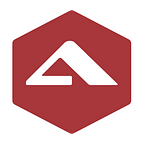Machine Learning Constitutes 65% of Kubernetes Workloads
Containerization reaches a plateau, and Kubernetes is being adopted for edge computing, data analytics, and machine learning workloads.
How containers changed the software life cycle
Prior to containerization, software code was traditionally developed in specific computing environments. This meant that transferring code to a new environment was challenging and often resulted in bugs and errors. Containerization removed this problem by putting software code along with its configuration files, libraries, and dependencies into a single package referred to as a container. The container is then abstracted, making it portable and able to run on any platform.
Besides portability, many organizations these days use containers for a variety of reasons, including:
- Agility. A container can be deployed quickly, improving the rate at which teams can move code from development to production.
- Resilience. By breaking up applications into fine-grained components, developers can deploy new functions or modify existing ones without affecting other functions.
- Scalability. Unlike virtual machines, which require starting an operating system before any work can be processed, containers are started and stopped within a running operating system, meaning they can be deployed or removed in seconds.
- Consistency. Regardless of what is in a container, the method for building, deploying, and upgrading containers in the exact same manner.
According to the recent reports, Kubernetes is being widely adopted for artificial intelligence, machine learning, and edge computing workloads, experiencing continued growth by 67% in 2021. Still, companies are facing issues around security, reliability, troubleshooting, scaling, updates, etc. Our new article expands on the state of containerization and Kubernetes adoption in the cloud-native space:
